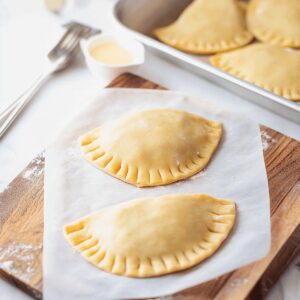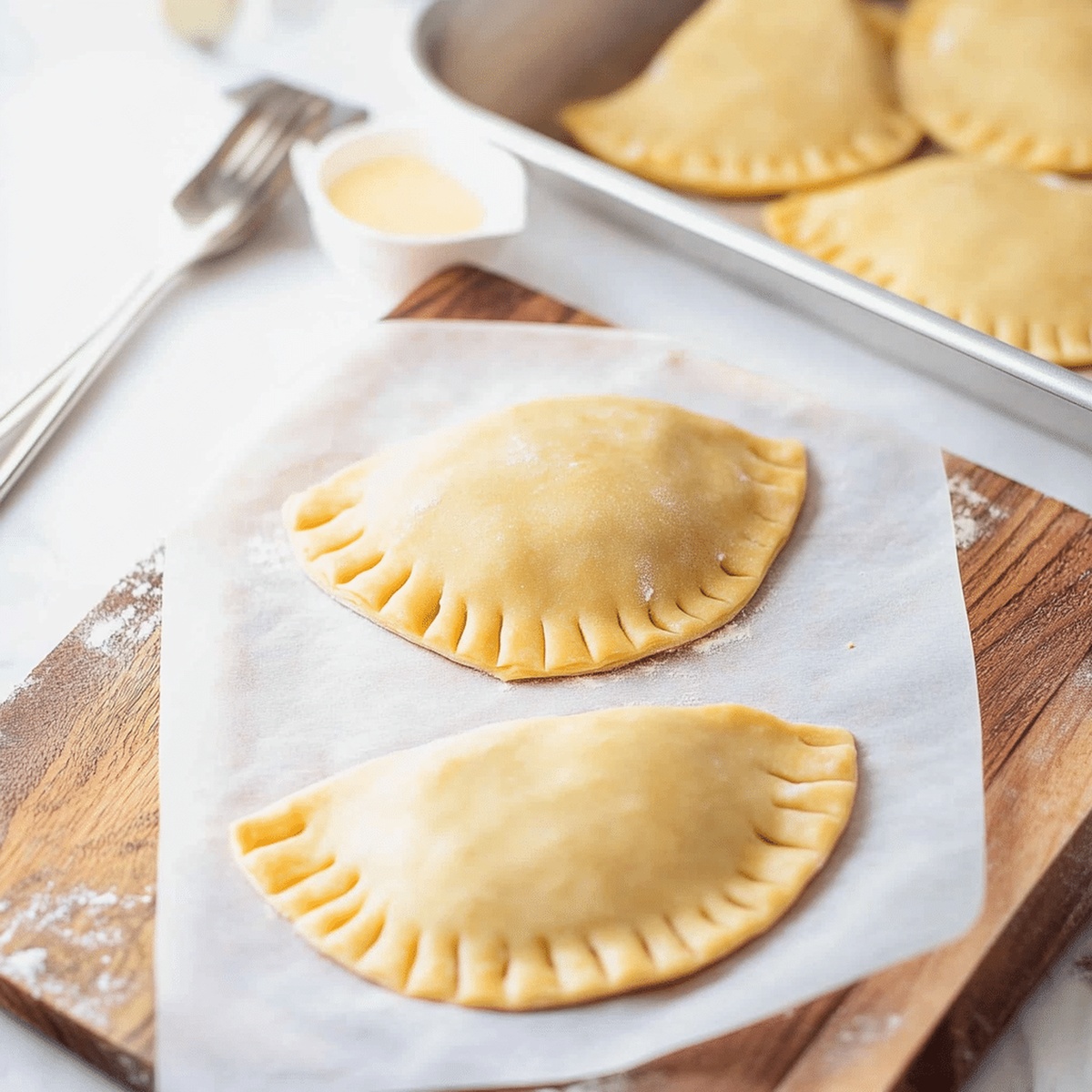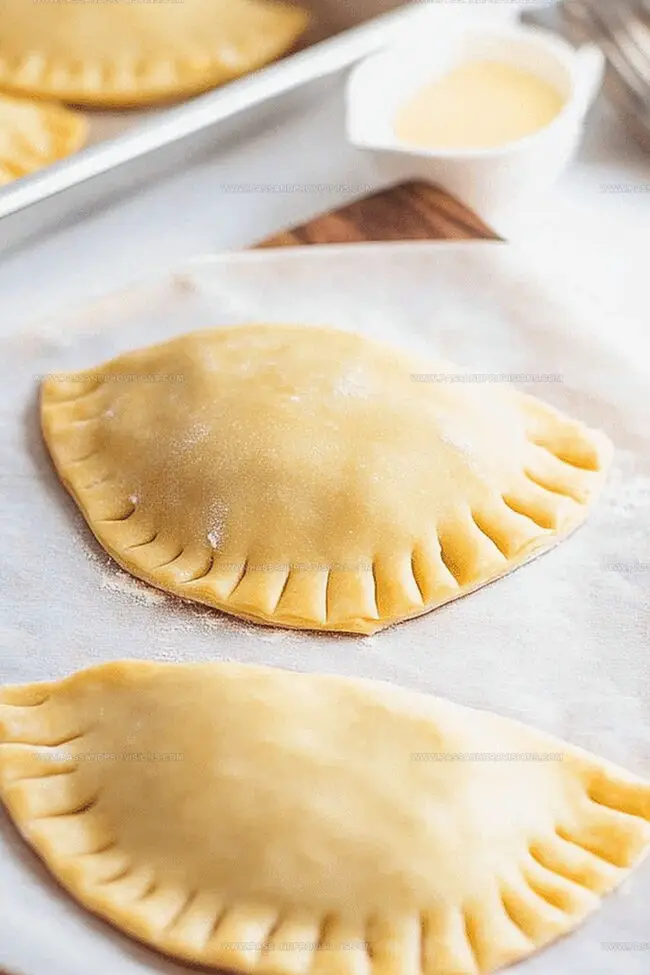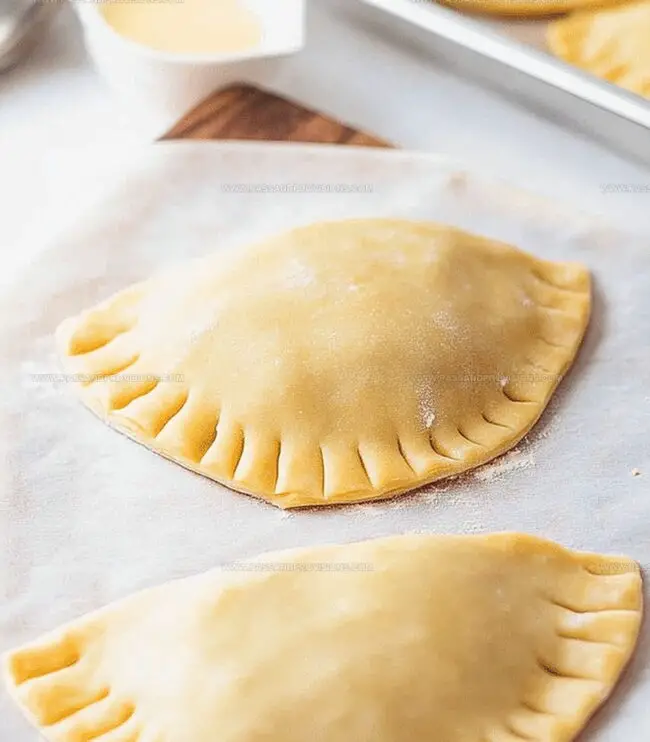Empanada Dough Recipe for Perfect Golden Crust
Crafting a delectable empanada dough recipe brings pure culinary joy to home cooks everywhere.
Pastry makers seek that perfect golden, flaky texture which melts in your mouth.
Latin American kitchens have long treasured these incredible hand-held delights.
Each fold and crimp tells a story of tradition and flavor.
Mastering this essential base unlocks a world of savory and sweet possibilities.
Crisp edges and tender centers await you with just a few simple ingredients.
You can create magic in your kitchen by following these straightforward steps.
Why People Keep Making Empanada Dough
What Goes Into Empanada Dough
Flour Ingredients:Fat Ingredients:Liquid Ingredients:How to Make Empanada Dough That Works Every Time
Step 1: Whisk Dry Ingredients
In a spacious mixing bowl, combine flour, salt, and optional sugar. Use a whisk to blend these ingredients thoroughly, ensuring an even distribution.
Step 2: Incorporate Butter
Add cold butter cubes into the flour mixture. Use fingertips or a pastry cutter to break down butter until the texture resembles rough breadcrumbs. Work quickly to keep butter cold.
Step 3: Combine Liquid Components
Crack an egg into a separate bowl. Add cold water and vinegar. Whisk these wet ingredients together until well blended. Slowly pour the liquid mixture into the flour-butter combination.
Step 4: Form Dough Mixture
Stir the ingredients with a fork, gradually bringing the dough together. When the mixture starts clumping, transition to using hands. Gently press and fold the ingredients until a cohesive ball forms.
Step 5: Knead Gently
Transfer dough onto a clean, lightly floured surface. Use gentle motions to knead, avoiding aggressive handling. The goal is a smooth, uniform texture without developing too much gluten.
Step 6: Chill Dough
Wrap the dough completely in plastic wrap. Place in refrigerator for minimum 30 minutes. Chilling allows butter to solidify and prevents shrinking during cooking.
Step 7: Prepare for Filling
Remove dough from refrigerator. Roll out on a floured surface to approximately 1/8 inch thickness. Cut into circular shapes using a cookie cutter or glass rim. Dough is now ready for your preferred empanada filling.
Pro Suggestions for Empanada Dough Prep
Storing and Reheating Empanada Dough the Smart Way
What to Serve with Empanadas
Empanada Dough Options to Explore
Questions About Empanada Dough, Explained
Yes, you can easily make empanada dough by hand using a pastry cutter, fork, or your fingertips to work the butter into the flour until it resembles coarse crumbs.
Vinegar helps prevent gluten development, resulting in a more tender and flaky crust by breaking down the protein in the flour.
Roll the dough to about 1/8 inch thickness for the perfect balance between a crispy exterior and a soft, tender texture that holds the filling well.
Absolutely! You can wrap the dough tightly in plastic wrap and freeze for up to 3 months. Thaw in the refrigerator overnight before using.
Print
Empanada Dough Recipe
- Total Time: 45 minutes
- Yield: 12 1x
Description
Golden, flaky empanada dough weaves Argentine culinary magic into pastry perfection. Crisp layers of buttery richness promise delectable handheld delights you’ll savor with each delicious bite.
Ingredients
Main Ingredients:
- 2.5 cups (300 grams) all-purpose flour
- ½ cup (113 grams) unsalted butter, cold and diced
- 1 large egg
Fat/Liquid Ingredients:
- ⅓ cup (80 milliliters) cold water (plus more, if needed)
- 1 tablespoon (15 milliliters) white vinegar
Seasoning Ingredients:
- 1 teaspoon salt
- 1 teaspoon sugar (optional, for sweeter dough)
Instructions
- Combine flour, salt, and optional sugar in a spacious mixing vessel, thoroughly blending the dry components with a whisk to ensure even distribution.
- Introduce cold, diced butter into the flour mixture, methodically breaking it down using a pastry cutter or fingertips until the texture resembles scattered, coarse granules.
- Separately whisk the egg with chilled water and vinegar, creating a uniform liquid base that will bind the dough’s ingredients.
- Gradually incorporate the liquid mixture into the flour-butter combination, gently stirring with a fork until the ingredients begin to coalesce into a preliminary dough structure.
- Transfer the nascent dough onto a lightly dusted work surface, employing delicate kneading techniques to transform it into a cohesive, smooth sphere without excessive manipulation.
- Encase the dough in plastic wrap, allowing it to rest and stabilize in the refrigerator for a minimum of half an hour, which relaxes the gluten and enhances its rollability.
- After chilling, position the dough on a flour-sprinkled surface and carefully roll it to an approximate thickness of 1/8 inch, maintaining an even, consistent layer.
- Utilize a circular cutting implement or glass rim to create precise dough rounds, adjusting the diameter to match your specific empanada design requirements.
Notes
- Chilling the dough develops a flakier, more tender texture by allowing gluten to relax and butter to firm up, preventing tough pastry.
- Experiment with different vinegars like apple cider or white wine vinegar to subtly enhance the dough’s flavor profile without overwhelming the taste.
- Use cold butter and work quickly to maintain small butter pieces, which create delightful layers and a light, crispy crust when baked or fried.
- Swap wheat flour with gluten-free alternatives like almond or rice flour for those with dietary restrictions, adjusting liquid ratios to maintain dough consistency.
- Prep Time: 15 minutes
- Cook Time: 30 minutes
- Category: Snacks, Appetizer, Lunch
- Method: Baking
- Cuisine: Latin American
Nutrition
- Serving Size: 12
- Calories: 210
- Sugar: 1 g
- Sodium: 200 mg
- Fat: 12 g
- Saturated Fat: 7 g
- Unsaturated Fat: 4 g
- Trans Fat: 0 g
- Carbohydrates: 24 g
- Fiber: 1 g
- Protein: 3 g
- Cholesterol: 30 mg




Jamie Granger
Recipe Developer & Food Writer
Expertise
Education
Culinary Institute of America
Jamie Granger turns ingredients into memories. With her recipes, she brings a fusion-forward flair to every creation.
Her dishes reflect the places she’s explored, the chefs she’s learned from, and the deep connection she has to food as a form of expression.
At Pass and Provision, Jamie develops recipes that balance flavor, health, and beauty, meals that don’t just satisfy your appetite but speak to your curiosity.